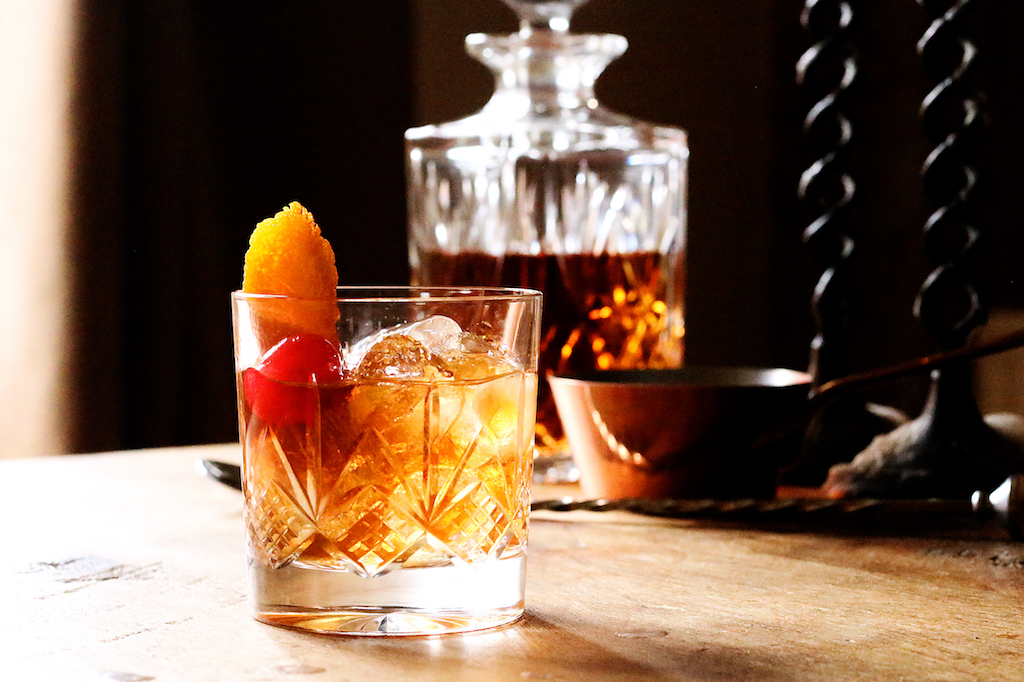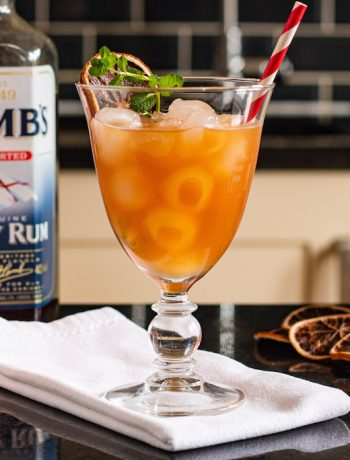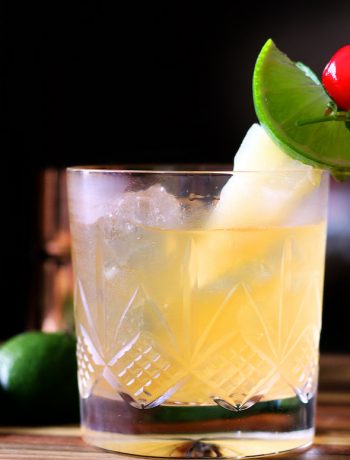When I came to choose a recipe for an Old Fashioned, I ended up completely paralysed by choice. There are countless recipes for this drink, and trying to identify one that would taste good while hanging onto the most original recipe was just impossible.
As you can imagine, the Old Fashioned is a very old drink indeed. Its origins are thought by some to come from the ‘whiskey cocktail’ that was being drunk in American bars in the early 1800s (we are talking Wild West era stuff here). With many variants of its own, the whiskey cocktail will have included American whiskey, a sweetener and a bitter of some sort. As cocktails became more sophisticated and complex, a punter wanting a basic whiskey cocktail without the frills would ask for an ‘old fashioned cocktail,’ in reference to that old-time mix of whiskey, sugar and a drop of medicine.
Some versions of the Old Fashioned are made with gin. Whether the gin version of an Old Fashioned is older than the whiskey version cannot be easily answered. The first record of an Old Fashioned comes from 1862 in Jerry Thomas’ Bartenders Guide: How To Mix Drinks, and that version uses Holland Gin. The thing is, Holland Gin might not really be gin as Thomas’s recipe for an Improved Holland Gin Cocktail used jenever (genepé), which is an classic alpine juniper spirit that is a mere kissing cousin to proper gin.
Regardless of true origin, the Old Fashioned was picked up and adapted in hundreds of glorious ways, and even gave its name to the glass it is drunk from.

Don Draper of Mad Men enjoying an Old Fashioned
Looking around the modern recipes, it is clear that the base spirit is either bourbon or rye (Canadian whiskey was specified in prohibition era versions). Cocktail impresario Simon Difford chooses to use both bourbon and rye, which sounds like a great idea.
The sweetener is sugar, and the IBA suggests that this is added as a solid cube that is then muddled with the fruit, and dissolved in water. This is a pointless piece of theatre when you can just use pre-dissolved sugar syrup and avoid the hazards of undissolved gritty sugar. In fact, there is a 1895 recipe for an Old Fashioned (Modern American Drinks, by George Kappeler) that highlights the problem presented by using whole sugar:
“Dissolve a small lump of sugar with a little water in a whiskey-glass; add two dashes Angostura bitters, a small piece of ice, a piece of lemon-peel, one jigger whiskey. Mix with small bar-spoon and serve, leaving spoon in glass.”
i.e., leave the customer to deal with the fact that the drink is impossible to make without mixing it forever, and give the poor sod a spoon.
Felicity Cloake of the Guardian has done the forensics on the contents of an Old Fashioned, and she settled on an all-Bourbon version with brown syrup and a muddled cherry among the fruit. This is nothing like the IBA version. While I don’t like the idea of the IBA sugar cube nonsense, I also don’t like the idea of all that fruit interfering with the simple, classic balance of whiskey and orange – we are making a cocktail here, not dessert. I also think that using 100% bourbon can be a bit sweet, in the same way as it can overbear in a Manhattan. So we are going with Difford for the alcohol, specifying brown sugar, doing an orange muddle and adding the cherry without smashing it to bits.
Old Fashioned
Ingredients
- 45ml bourbon whiskey
- 30ml rye whiskey
- 10ml brown sugar syrup
- 3 dashes of Angostura bitters
Instructions
Muddle a slice or orange peel in the sugar syrup in the base of an Old Fashioned glass. Fish the destroyed peel from the glass and discard.
Add the other ingredients.
Gradually add ice cubes while stirring to ensure an even mix and proper chill.
Garnish with a twist of orange peel and a Maraschino cherry. Twist the orange peel over the glass to release some of its oils and wipe the inside of the rim with the pith side before dropping into the glass.
Notes
Brown sugar syrup can be made by mixing brown sugar 1:1 w/w with water, heating, cooling and bottling.






2 Comments
Bryan Meyer
05/04/2020 at 3:13 amNice old fashioned recipe. I’d note to avoid muddling the orange peel as it can add unwanted astringency. Cheers.
Nigel Eastmond
06/04/2020 at 8:55 amIs there enough orange flavour if you don’t do that? The bitterness of peel comes from the white bit, so you could make sure that is barely there, I guess …?